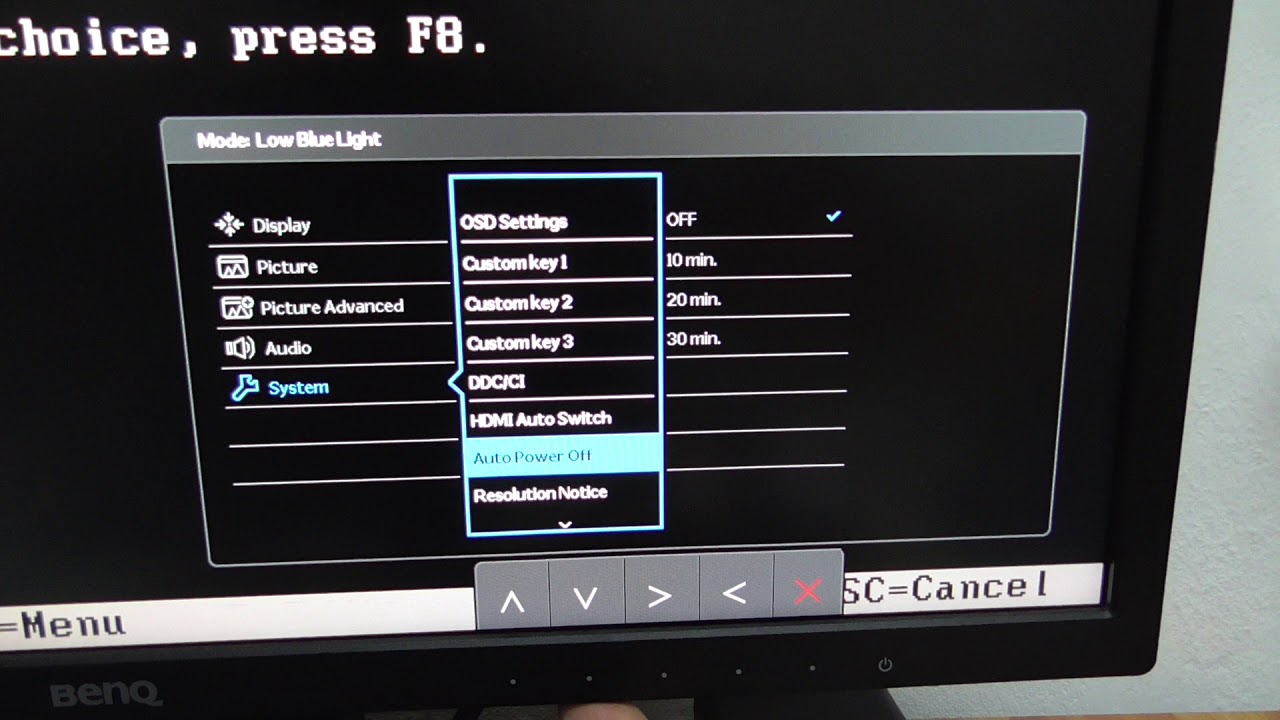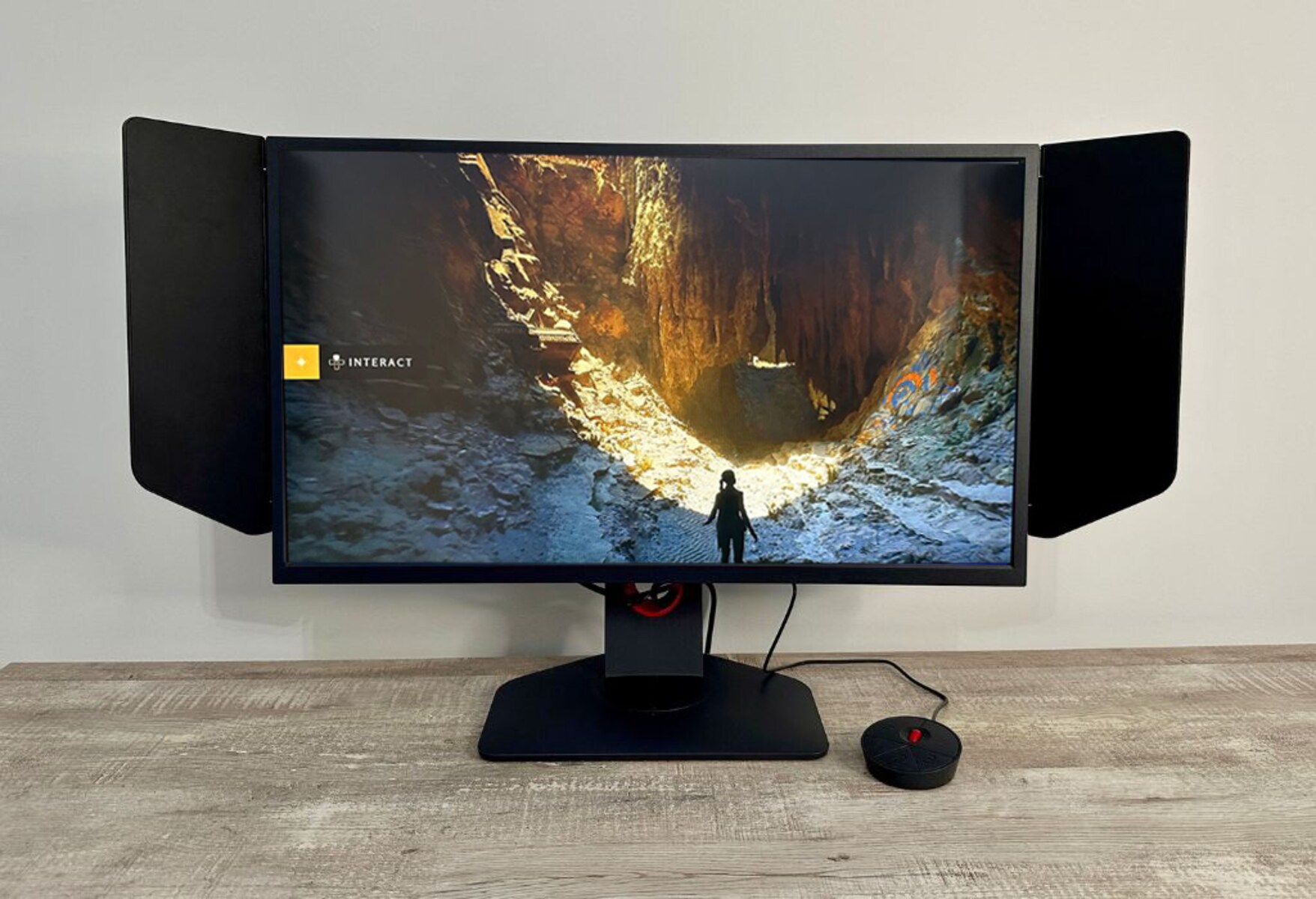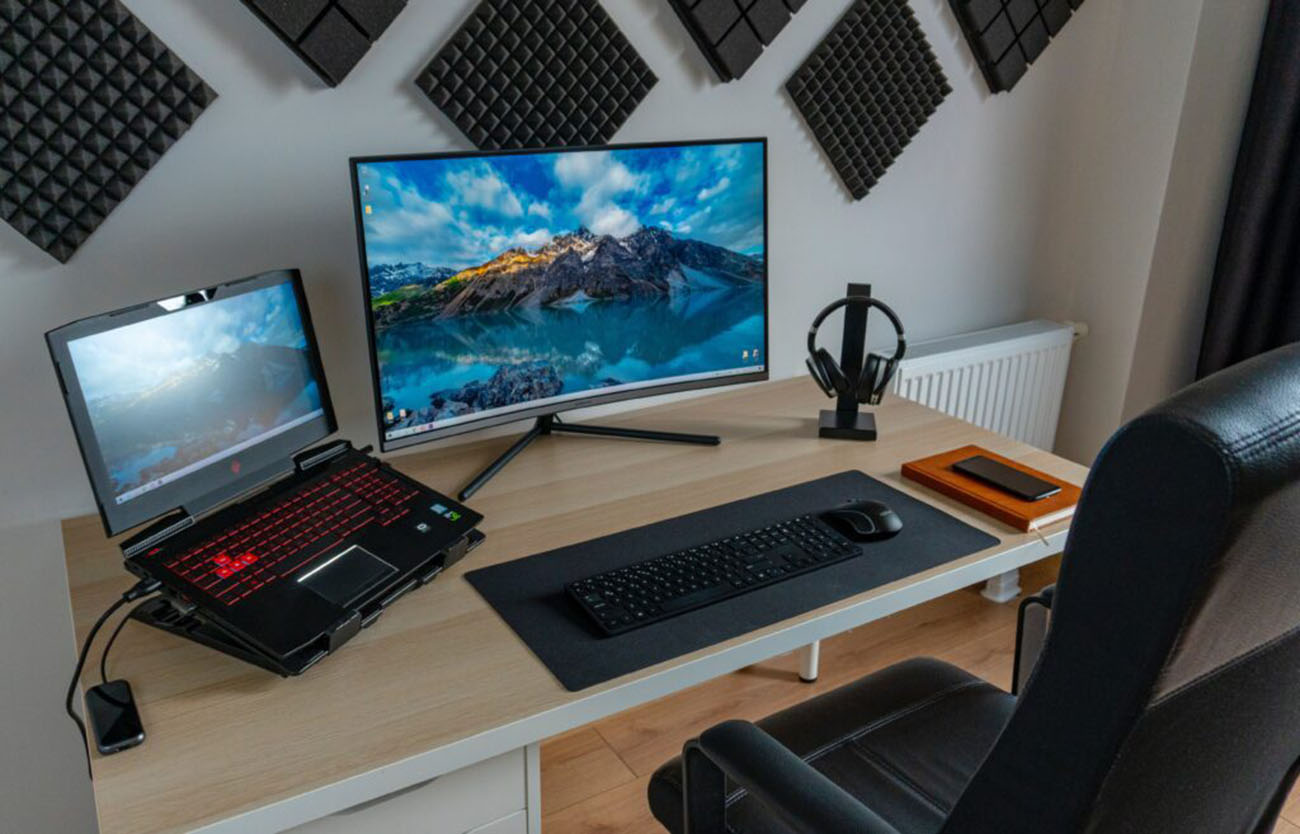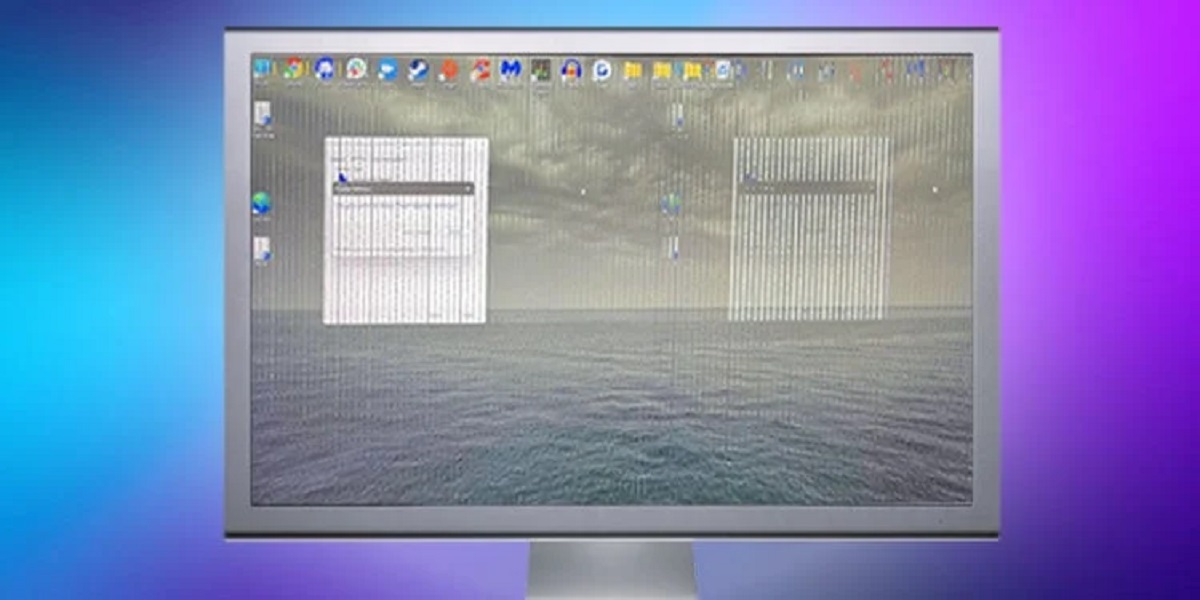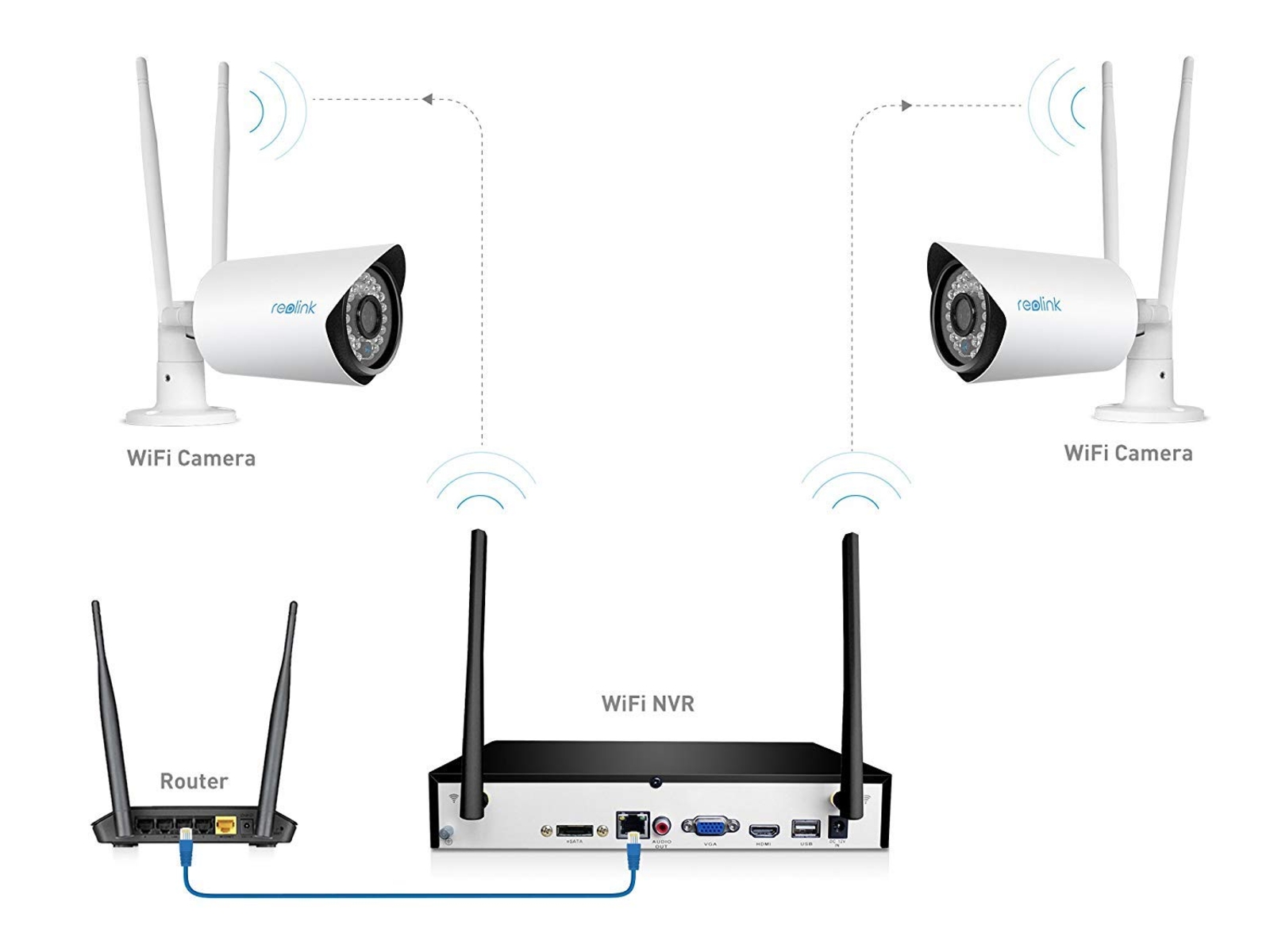Introduction
Welcome to this guide on how to reset a monitor. In today’s digital age, monitors play an essential role in our lives, whether it’s for work, entertainment, or staying connected with the world. However, just like any other electronic device, monitors can sometimes encounter issues that require a reset to restore functionality.
But what exactly does it mean to reset a monitor? Simply put, it involves restoring the monitor’s settings and functionality to their default state, erasing any customization that may have been made. This process can help resolve a variety of problems, such as display glitches, incorrect color calibration, black screens, or unresponsive buttons.
In this comprehensive guide, we will explore the various reasons why you may need to reset your monitor and present different methods to help you accomplish the task with ease. Whether you’re a tech-savvy individual or someone new to troubleshooting electronics, this guide has got you covered.
So why should you bother resetting your monitor when encountering issues? Well, there are several key reasons to consider:
- Restoring default settings: Over time, you may have made changes to your monitor’s settings that no longer suit your needs. Resetting the monitor allows you to start fresh and revert to the default settings.
- Resolving display issues: If you’re experiencing unusual glitches, flickering screens, or distorted images, resetting the monitor can often resolve these problems and bring back a clear and stable display.
- Fixing color calibration: Incorrect color calibration can impact the viewing experience. Resetting the monitor can help realign color profiles and ensure accurate color reproduction.
- Fixing unresponsive controls: If the buttons on your monitor have become unresponsive or are not functioning as they should, resetting the monitor can sometimes fix these control-related issues.
Now that we understand why resetting a monitor is important, let’s explore the different methods you can use to reset your monitor and get it back in working order.
What is Monitor Reset?
Before we dive into the different ways of resetting a monitor, let’s take a moment to understand what a monitor reset actually entails. When you reset a monitor, you are essentially restoring it to its default factory settings, undoing any customizations or adjustments that have been made.
During normal use, you may have altered various settings on your monitor, such as brightness, contrast, color temperature, or aspect ratio, to suit your preferences. While these customization options are great for personalization, they can sometimes lead to issues or discrepancies in display quality.
A monitor reset serves as a troubleshooting method to address common problems like distorted images, color inaccuracies, or unresponsive controls. By returning the monitor to its default settings, you can start fresh and eliminate any potential issues caused by previous customizations.
It’s worth noting that a monitor reset does not erase any data from the monitor itself. Instead, it focuses on restoring the software and hardware settings to their original state. This means that any personal files, documents, or settings stored on connected devices, such as computers or gaming consoles, will remain unaffected.
Resetting a monitor can be especially useful in situations where troubleshooting efforts have not yielded any positive results. If you’ve exhausted other troubleshooting methods like adjusting cables, updating drivers, or performing system scans, a reset can be a logical next step.
However, it’s important to exercise caution when resetting a monitor. It’s always a good idea to check the manufacturer’s documentation or support website for specific instructions on how to perform a reset for your particular make and model. Different monitors may have varying methods or button combinations to access the reset function.
Now that we have a clear understanding of what a monitor reset is, let’s explore the different methods you can use to reset your monitor and get it back to optimal performance.
Why do You Need to Reset Your Monitor?
There are several common scenarios where resetting your monitor can prove to be helpful in resolving issues and improving overall performance. Let’s take a closer look at why you may need to reset your monitor:
1. Display issues: If you’re experiencing problems such as flickering screens, artifacts, or distorted images, a monitor reset can help resolve these issues. Resetting the monitor restores the default display settings, eliminating any potential software glitches or incorrect configurations that may be causing the display problems.
2. Color calibration: Accurate color calibration is crucial, especially for professionals in fields such as graphic design, photography, or video editing. If you find that the colors on your monitor appear dull, oversaturated, or inconsistent, a reset can recalibrate the color settings and bring back accurate color reproduction.
3. Unresponsive controls: The buttons and controls on a monitor can sometimes become unresponsive or malfunction. Whether it’s difficulty adjusting brightness, navigating menus, or switching inputs, a reset can often rectify these control-related issues and restore the normal functioning of the monitor’s buttons.
4. Incorrect settings: Over time, you may have made adjustments to your monitor’s settings that no longer suit your needs. These changes can introduce unwanted artifacts, color inaccuracies, or unnatural display ratios. By resetting the monitor, you can start fresh with the default settings and then personalize them based on your preferences.
5. Firmware updates: Resetting your monitor can also be necessary when performing firmware updates. These updates often require the monitor to be reset as part of the installation process to ensure that the new firmware is properly applied and integrated into the monitor’s system.
It’s important to note that while a monitor reset can address many common issues, it is not a solution for hardware problems. If you notice physical damage, such as a cracked screen or malfunctioning connectors, a reset won’t fix those issues. In such cases, professional repair or replacement may be required.
Now that we’ve explored the reasons why you may need to reset your monitor, let’s move on to the various methods you can use to perform a reset effectively.
Different Ways to Reset a Monitor
When it comes to resetting a monitor, there are several methods you can try depending on your specific monitor model and the nature of the issue you’re facing. Let’s explore some of the most common ways to reset a monitor:
Method 1: Using the monitor settings menu: Many monitors offer an on-screen display (OSD) menu that allows you to access various settings and features. To perform a reset using the menu, navigate through the options and find the “Reset” or “Factory Reset” option. Selecting this option will restore the monitor’s settings to their default values. Refer to your monitor’s manual for specific instructions on accessing the settings menu and locating the reset option.
Method 2: Unplugging and replugging the monitor: Sometimes, a simple power cycle can help resolve minor issues. Start by turning off the monitor and unplugging it from the power source. Wait for a few minutes, then plug it back in and turn it on. This action can clear temporary glitches and reset the monitor to its default state.
Method 3: Performing a power cycle: Similar to the previous method, a power cycle involves fully disconnecting the monitor from power. However, in this method, you will also need to disconnect all cable connections from both the monitor and the computer or other devices. Leave everything unplugged for a few minutes, then reconnect the cables and power up the monitor. This method can help tackle more persistent issues that a simple unplugging and replugging may not resolve.
Method 4: Updating monitor firmware: Firmware updates can bring improvements and bug fixes to your monitor’s functionality. If your monitor supports firmware updates, visit the manufacturer’s website and download the latest firmware version. Follow the provided instructions to update the firmware and perform a reset as part of the installation process.
Method 5: Physical reset button: Some monitors have a physical reset button located either on the front, side, or rear. This button is specifically designed to reset the monitor to its default settings. Refer to your monitor’s manual or documentation to find the location of the reset button and the steps to perform a reset using it.
It’s important to note that not all monitors have the same reset options and methods. The availability of these options may vary depending on the manufacturer, make, and model of your monitor. Therefore, it’s crucial to consult your monitor’s manual or the manufacturer’s website for specific instructions tailored to your device.
Now that we’ve explored the different methods to reset a monitor, you can choose the one that best suits your situation and get your monitor back to optimal performance.
Method 1: Using the Monitor Settings Menu
One of the most common and straightforward methods to reset a monitor is by utilizing the monitor settings menu. This method is widely applicable to monitors that offer on-screen display (OSD) menus, allowing users to access and adjust various settings and configurations.
To begin, you will need to locate the OSD buttons on your monitor. Typically, these buttons are placed on the front, bottom, or side of the monitor. Refer to your monitor’s manual or documentation to identify the button layout for your specific model.
Once you have identified the OSD buttons, follow these steps to reset your monitor:
- Turn on your monitor and access the OSD menu by pressing the appropriate OSD button, usually labeled as “Menu” or having an icon resembling a gear or settings.
- Navigate through the OSD menu using the directional buttons or a joystick, if available, until you find the “Reset” or “Factory Reset” option. Often, this option is located within the “Settings” or “System” sub-menu.
- Select the “Reset” or “Factory Reset” option using the appropriate button or by pressing the center button, usually labeled “OK” or having an icon resembling an arrow pointing inward.
- Confirm the reset operation if prompted by the menu.
- Wait for the monitor to perform the reset, which may take a few seconds. The monitor will revert to its default factory settings.
- Once the reset is complete, exit the OSD menu and test your monitor to ensure that the issues you were facing have been resolved.
It’s important to note that the specific steps involved in accessing the OSD menu and performing a reset vary between different monitor models. Some monitors may use a combination of buttons or gestures to access the menu or perform a reset. Therefore, always refer to your monitor’s manual or documentation for precise instructions tailored to your device.
By utilizing the monitor settings menu to reset your monitor, you can restore the default configurations, undo any previous adjustments, and resolve issues related to display settings, color calibration, or unresponsive controls.
Now that you’re familiar with this method, you can confidently use the monitor settings menu to perform a reset and get your monitor back in optimal working condition.
Method 2: Unplugging and Replugging the Monitor
If you’re encountering minor issues with your monitor, a simple yet effective method to reset it is by unplugging and replugging the device. This method is known as a power cycle and can help clear any temporary glitches or errors that may be affecting the monitor’s performance.
To perform a power cycle, follow these steps:
- Turn off your monitor by pressing the power button located on the front or side of the device.
- Unplug the power cable from the monitor, ensuring that it is completely disconnected from the power source. You may also want to detach any other cables connected to the monitor, such as HDMI, DisplayPort, or VGA cables.
- Wait for about two to three minutes to allow any residual electricity to dissipate from the monitor’s components.
- After the waiting period, reconnect the power cable and any other necessary cables to the monitor.
- Turn on the monitor by pressing the power button.
Performing this power cycle effectively resets the monitor by restoring the power supply and initializing the device from a fresh state. It can help resolve common issues such as display glitches, black screens, or unresponsive controls.
It’s important to note that during the power cycle, the monitor’s settings and configurations will revert to their default values. This can be beneficial if you’ve made adjustments that are causing issues, as the power cycle will undo those changes.
However, it’s worth mentioning that a power cycle may not resolve more persistent or complex problems. If you find that the issue persists even after performing a power cycle, you may need to explore other methods or consult the manufacturer’s support for further assistance.
By using the method of unplugging and replugging the monitor, you can quickly and easily reset your monitor, potentially resolving minor issues and restoring optimal functionality.
Now that you’re familiar with this method, you can confidently perform a power cycle on your monitor when necessary to troubleshoot and reset the device.
Method 3: Performing a Power Cycle
If you’re encountering persistent issues with your monitor that are not resolved through a simple unplugging and replugging, performing a power cycle can often provide a more thorough reset. This method involves fully disconnecting the monitor from both power and any connected devices.
To perform a power cycle on your monitor, follow these steps:
- Turn off your monitor by pressing the power button.
- Unplug the power cable from the monitor, ensuring that it is completely disconnected from the power source.
- Disconnect all cables connected to the monitor, such as HDMI, DisplayPort, or VGA cables.
- Leave the monitor and cables disconnected for approximately five minutes.
- After the waiting period, reconnect the cables to the monitor.
- Plug the power cable back into the monitor and ensure it is properly connected to the power source.
- Turn on the monitor by pressing the power button.
Performing a power cycle in this manner ensures that all power is completely drained from the monitor and resets the internal components. This helps resolve more persistent issues that may have been caused by incorrect configurations or software glitches.
During the power cycle, the monitor’s settings and configurations will reset to their default values. This can be beneficial if you’ve made adjustments that are causing issues, as the power cycle will revert those changes.
After performing the power cycle, check if the issues you were facing have been resolved. If the problems persist, you may need to explore other troubleshooting steps or contact the manufacturer’s support for further assistance.
Performing a power cycle is a straightforward and effective method to reset your monitor, allowing it to start fresh and potentially resolve persistent issues impacting its performance.
Now that you’re familiar with this method, you can confidently perform a power cycle on your monitor when necessary to thoroughly reset the device and troubleshoot any persistent problems.
Method 4: Updating Monitor Firmware
If you’re experiencing issues with your monitor that persist even after performing other reset methods, updating the monitor’s firmware may be a viable solution. Firmware updates can enhance the functionality of your monitor and address known software bugs or compatibility issues.
Here’s how you can update your monitor’s firmware:
- Visit the manufacturer’s website and navigate to the support or downloads section.
- Locate the firmware update for your specific monitor model. Ensure that you download the correct firmware version compatible with your monitor.
- Read any accompanying instructions or release notes provided by the manufacturer to understand the update process and any specific requirements.
- Connect your monitor to your computer using the necessary cables, such as HDMI or USB, as specified by the manufacturer.
- Open the firmware update utility or the accompanying firmware update tool provided by the manufacturer.
- Follow the on-screen prompts to initiate the firmware update process. This may involve selecting your monitor model, browsing for the downloaded firmware file, and confirming the update.
- Wait for the firmware update to complete. Do not turn off or disconnect your monitor or computer during the update process, as it can lead to firmware corruption or malfunction.
- Once the update is finished, restart your monitor and computer.
Updating the monitor’s firmware often includes a built-in reset as part of the installation process. This reset ensures that the new firmware is properly applied and integrated into the monitor’s system, potentially resolving any software-related issues that you were facing.
It’s worth noting that not all monitors support firmware updates, and the update process can vary depending on the manufacturer. Therefore, it’s essential to consult the manufacturer’s documentation, support website, or contact their customer support for specific instructions on updating the firmware of your particular monitor model.
By updating your monitor’s firmware, you can take advantage of the latest enhancements, bug fixes, and optimizations provided by the manufacturer. This can help improve the performance, compatibility, and stability of your monitor.
Now that you’re familiar with the process, you can confidently update your monitor’s firmware to address any persistent issues and ensure that your monitor is functioning optimally.
Conclusion
In conclusion, resetting a monitor can be a helpful troubleshooting step when encountering various issues such as display glitches, color inaccuracies, unresponsive controls, or incorrect settings. By restoring the monitor to its default factory settings, you can often resolve these problems and improve overall performance.
Throughout this guide, we have explored different methods to reset a monitor. Using the monitor settings menu allows you to access the on-screen display (OSD) menu and select the reset or factory reset option. Unplugging and replugging the monitor performs a simple power cycle, while performing a power cycle involves fully disconnecting the monitor from power and other cables. Lastly, updating the monitor firmware can address software-related issues and bring enhancements provided by the manufacturer.
When performing a monitor reset, it’s important to consult your monitor’s manual or the manufacturer’s documentation for specific instructions tailored to your device. Different monitors may have varying methods or button combinations to access the reset function.
Remember, a reset restores the monitor’s settings and configurations to their default state, undoing any customizations or adjustments that have been made. While resetting a monitor can often resolve common issues, it may not fix hardware-related problems. If you’re experiencing physical damage or severe malfunctions, seeking professional repair or replacement may be necessary.
We hope that this guide has provided you with valuable insights on how to reset a monitor effectively. By utilizing these methods, you can troubleshoot and resolve issues, restore optimal performance, and enjoy a clear and vibrant display for all your work and entertainment needs.







